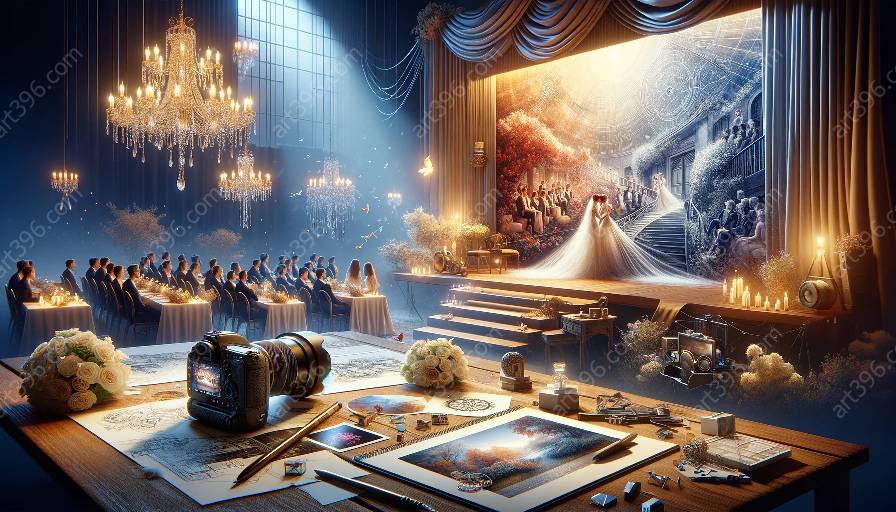Wedding photography is a blend of art, creativity, and technical skill. Mastering low-light photography in wedding settings can be a challenging but rewarding endeavor for photographers. Capturing the precious moments of a wedding in dimly lit venues or during nighttime events requires a thorough understanding of camera settings, lighting techniques, and post-processing methods. In this comprehensive guide, we will delve into the essential tips, equipment, and strategies to excel in low-light wedding photography, elevating the overall quality of wedding photography and digital arts.
The Importance of Low-Light Photography in Wedding Settings
Weddings often take place in various settings, including churches, banquet halls, and outdoor venues, where natural and artificial lighting can be limited. Low-light photography becomes essential for capturing the intimate moments and emotions of the wedding ceremony, reception, and other related events. Furthermore, evening or nighttime weddings create a unique ambiance that photographers can beautifully showcase through their low-light photography skills, highlighting the romance and elegance of the occasion.
Understanding Low-Light Photography
Low-light photography involves working in conditions with minimal available light. In wedding settings, photographers often encounter low-light challenges, such as uneven or harsh artificial lighting, dimly lit interiors, and fast-changing lighting conditions. To master low-light wedding photography, one must understand the technical aspects of exposure, focus, and composition in low-light environments.
Camera Settings and Equipment
When photographing weddings in low-light conditions, it's crucial to have the right camera gear. Full-frame DSLR or mirrorless cameras with excellent low-light performance are ideal for capturing high-quality images in challenging lighting situations. Fast prime lenses with wide apertures, such as 35mm or 50mm f/1.8 or faster, enable photographers to gather more light and achieve a shallow depth of field, resulting in stunning bokeh and sharp subject focus.
Apart from equipment, understanding and mastering fundamental camera settings such as ISO, aperture, and shutter speed are essential for low-light photography. Using a higher ISO sensitivity allows the camera's sensor to capture more light in darker environments, but it's important to balance it with the understanding of noise management and image quality. Moreover, adjusting the aperture to its widest setting and optimizing the shutter speed for handheld or stationary shots play a significant role in low-light photography, ensuring sharpness and proper exposure.
Lighting Techniques
In addition to leveraging available light, photographers can further enhance low-light wedding photography by incorporating artificial lighting techniques. Off-camera flash, continuous LED lights, and creative use of ambient lighting sources can be employed to add depth, warmth, and drama to wedding photos. Mastering the art of diffusing and bouncing flash, as well as creating natural-looking lighting setups, can elevate the visual storytelling of the wedding day and produce captivating images.
Post-Processing and Editing
Post-processing plays a vital role in refining low-light wedding photos to achieve the desired mood, color balance, and visual impact. Editing software such as Adobe Lightroom and Photoshop enables photographers to adjust exposure, enhance details, reduce noise, and apply creative effects to their low-light images. Understanding the principles of image editing and developing a consistent post-processing workflow is crucial for maintaining the quality and integrity of low-light wedding photography.
Enhancing Wedding Photography and Digital Arts
The mastery of low-light photography in wedding settings not only elevates the quality of wedding photography but also adds depth and artistry to the realm of digital arts. By effectively capturing and showcasing the beautiful moments of a wedding in challenging lighting conditions, photographers can create timeless and impactful visual narratives that resonate with couples, families, and viewers. The ability to skillfully handle low-light challenges in wedding photography contributes to the growth and evolution of digital arts, inspiring creativity, innovation, and excellence in visual storytelling.
Conclusion
Mastering low-light photography in wedding settings requires dedication, patience, and continuous learning. By understanding the importance of low-light photography in weddings, mastering camera settings and equipment, utilizing lighting techniques, and refining post-processing skills, photographers can elevate the overall quality of wedding photography and contribute to the advancement of digital arts. Embracing the challenges of low-light conditions empowers photographers to artistically express the unique beauty and emotion of weddings, creating timeless visual legacies that resonate with couples and audiences alike.



















































